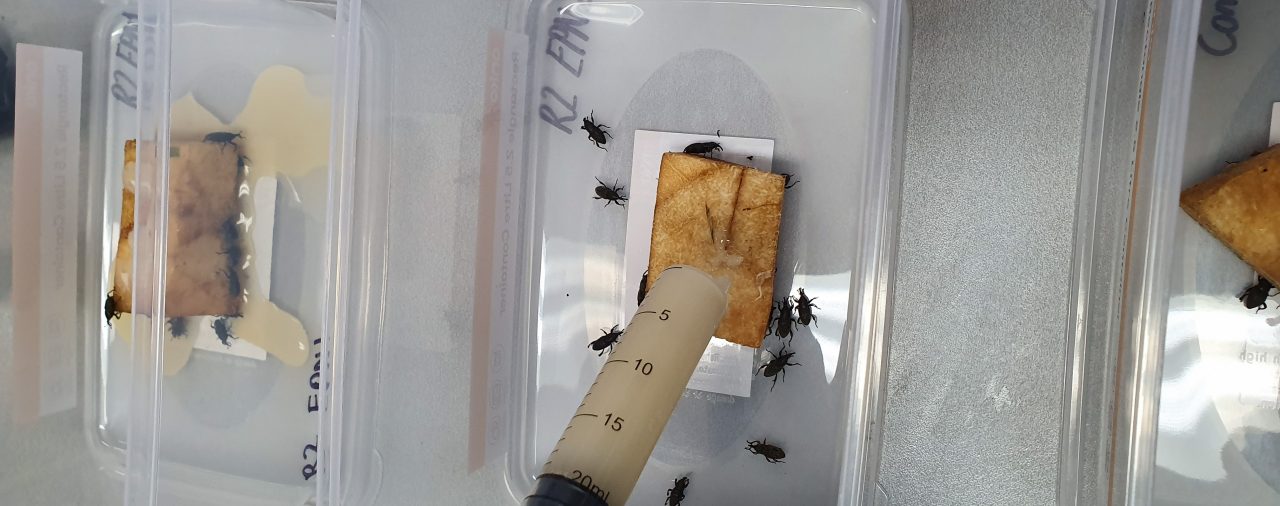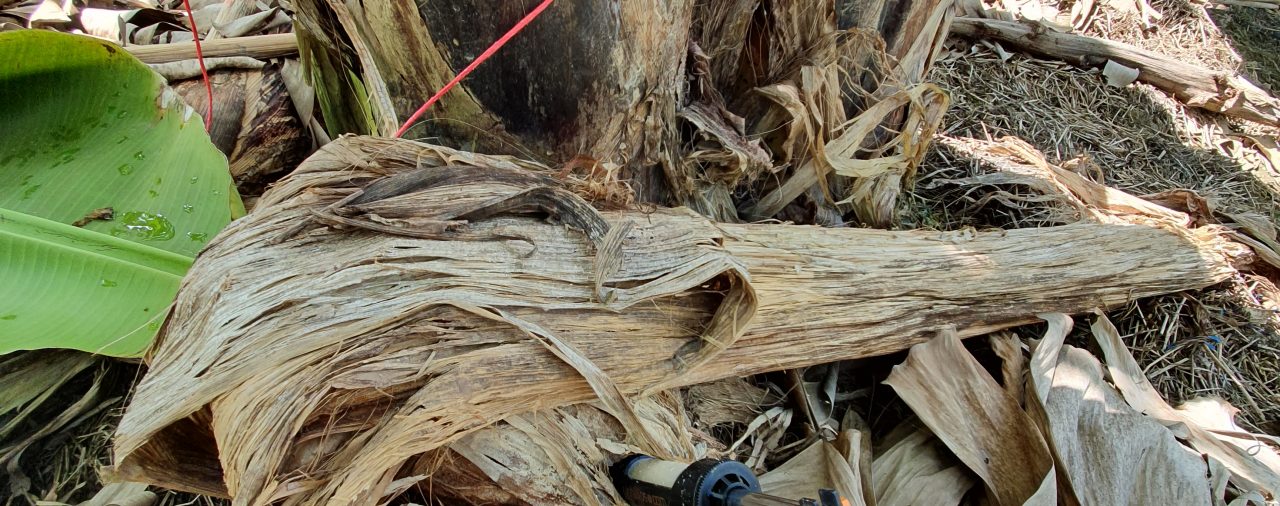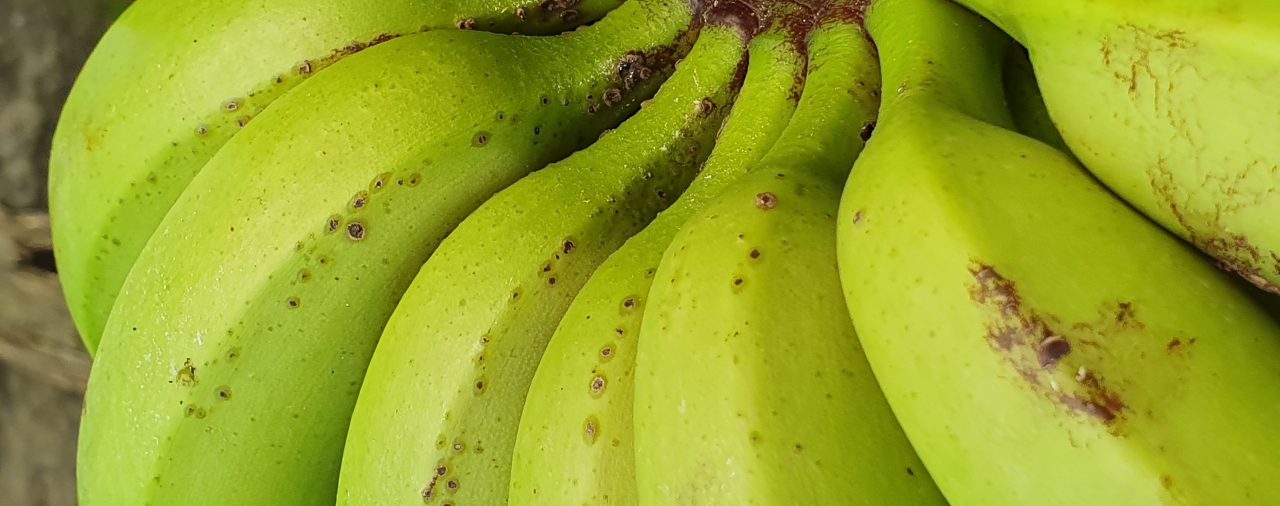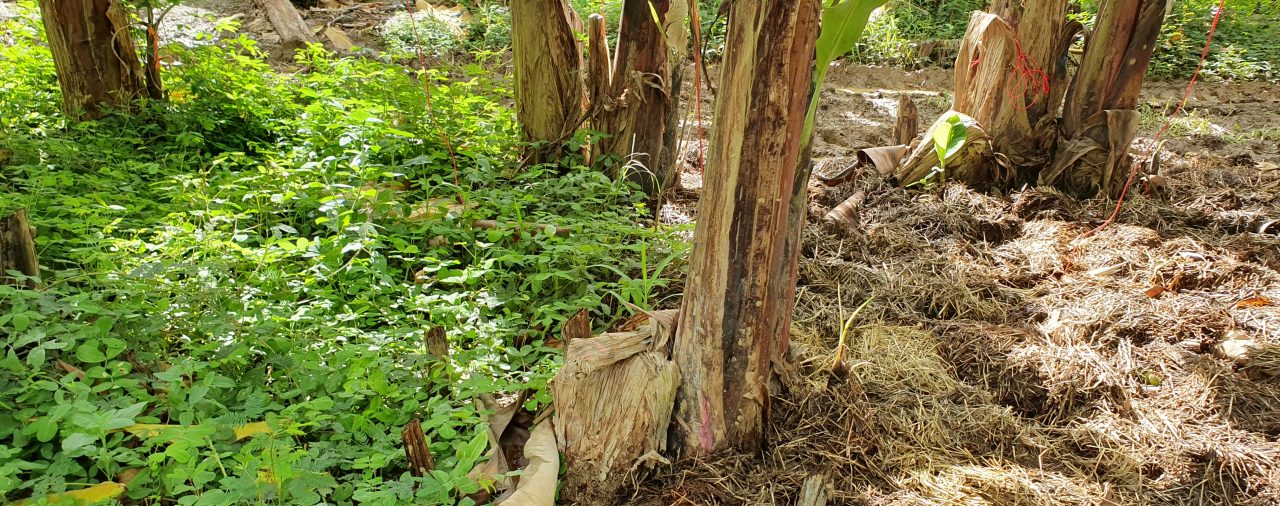Innovation trial update
By Shanara Veivers, Department of Agriculture and Fisheries
The innovation trial planted at the South Johnstone Research Station in November 2017 investigates various ‘out of the box’ concepts that growers may not be willing to take on due to the financial risk, or have the time and resources to trial on their own farms.
The field trial has a focus on those practices that may increase agronomic performance and/or have environmental benefits.
Within the trial, 90% of plants in the first ratoon crop have been harvested, with very few bunches yet to emerge.
What has been trialled so far?
• Living and non-living ground covers on the banana bed including black weed matting, chemical soil stabiliser, mint, pinto peanut and conventional bare-earth treatments.
• Early vs late de-suckering – 50% of plants received early de-suckering, which was the removal of the first ‘flush’ of suckers 3 months after planting, compared to a conventional approach of de-suckering closer to bell emergence.
What are some of the plant crop results?
• Plants that were de-suckered early had shown to produce more leaves, were taller and produced heavier bunches.
• Ground cover affected the cycle time, height and bunch characteristics of the plants. Plants in the black weed matting:
– took longer to reach bell emergence (248 days) compared to pinto peanut (219 days), mint (212 days), soil stabiliser (206 days), with conventional bare-earth being the fastest (194 days).
– had a higher average plant height (258cm) compared to conventional bare (251cm)
– had a higher average number of hands (7 hands) compared to conventional bare (6 hands)
• The chemical soil stabiliser product (10% solution) deteriorated rapidly due to high rainfall, as a result the soil stabiliser plots were replaced with mulching hay.
• Weeds crowded out the ‘mint’ living ground cover, and more time was required to desucker the mint and pinto peanut plots.
NEW INNOVATIONS
Entomopathogenic nematodes (EPNs)
Laboratory experiments are currently underway to see if entomopathogenic nematodes have the potential to control banana weevil borer.
Observations so far show that these nematodes are capable of killing adult banana weevil borers.
Similar to back butt injection, plants in the field trial have also been treated with the nematodes, however it is still early days. Watch this space as research progresses!
Bell injection
A biological product containing species such as Beauveria bassiana and Metarhizium anisopliae has been trialled as a potential control for banana scab moth, flower thrips and rust thrips.
Unfortunately this biological product did not provide adequate control of banana bunch pests and caused some phytotoxicity to the bunch.
The use of EPNs as a potential bell injection treatment to control banana scab moth, flower thrips and rust thrips will soon be conducted.
This trial is funded as part of the strategic levy investment project National Banana Development and Extension Program BA16007. The project is funded by Hort Innovation using the banana research and development levy, co-investment from the Queensland Department of Agriculture and Fisheries and contributions from the Australian Government. Hort Innovation is the grower-owned, not-for-profit research and development corporation for Australian horticulture.







